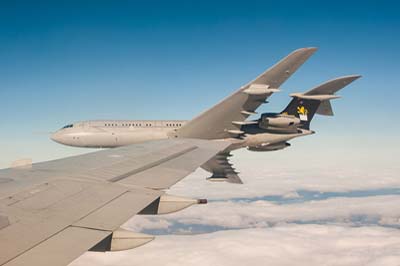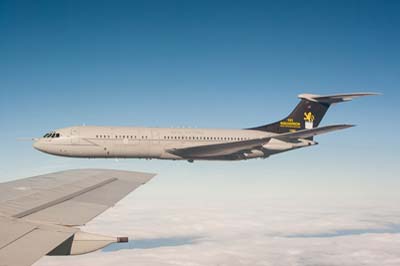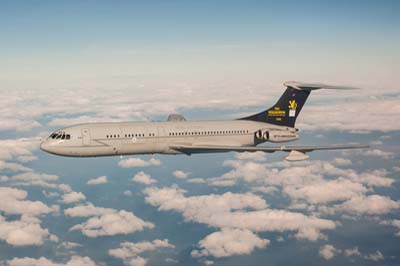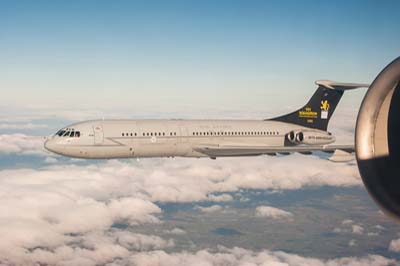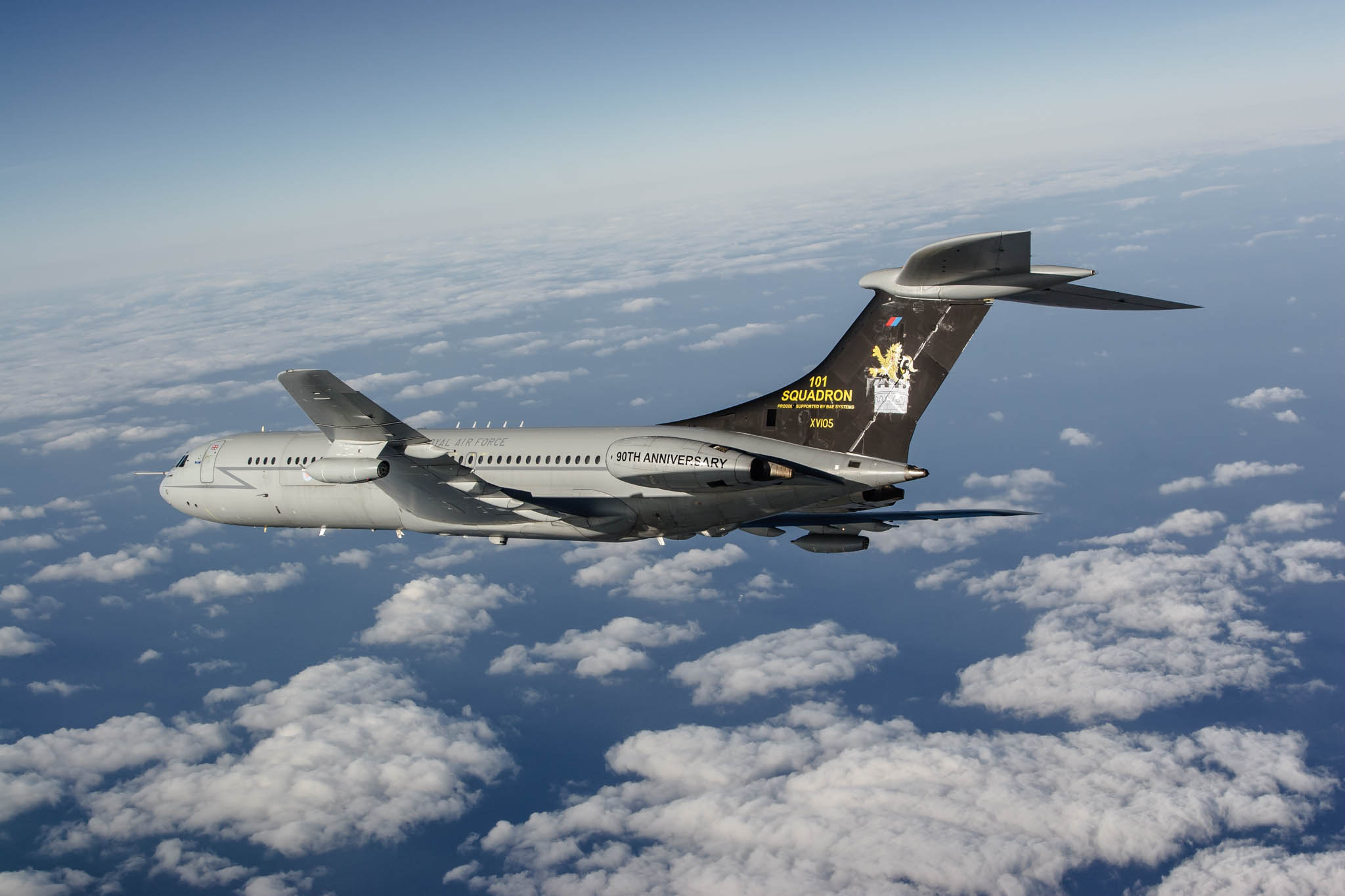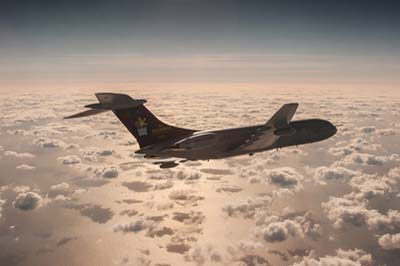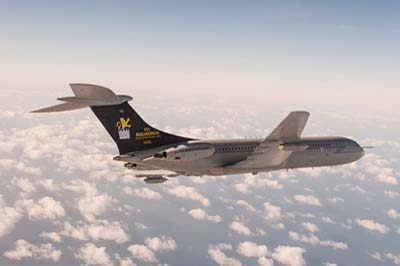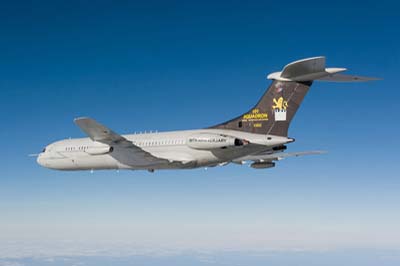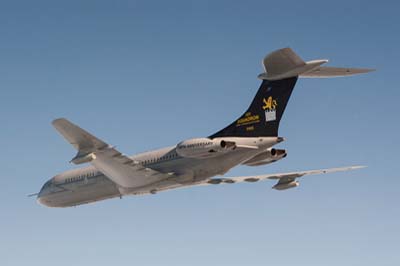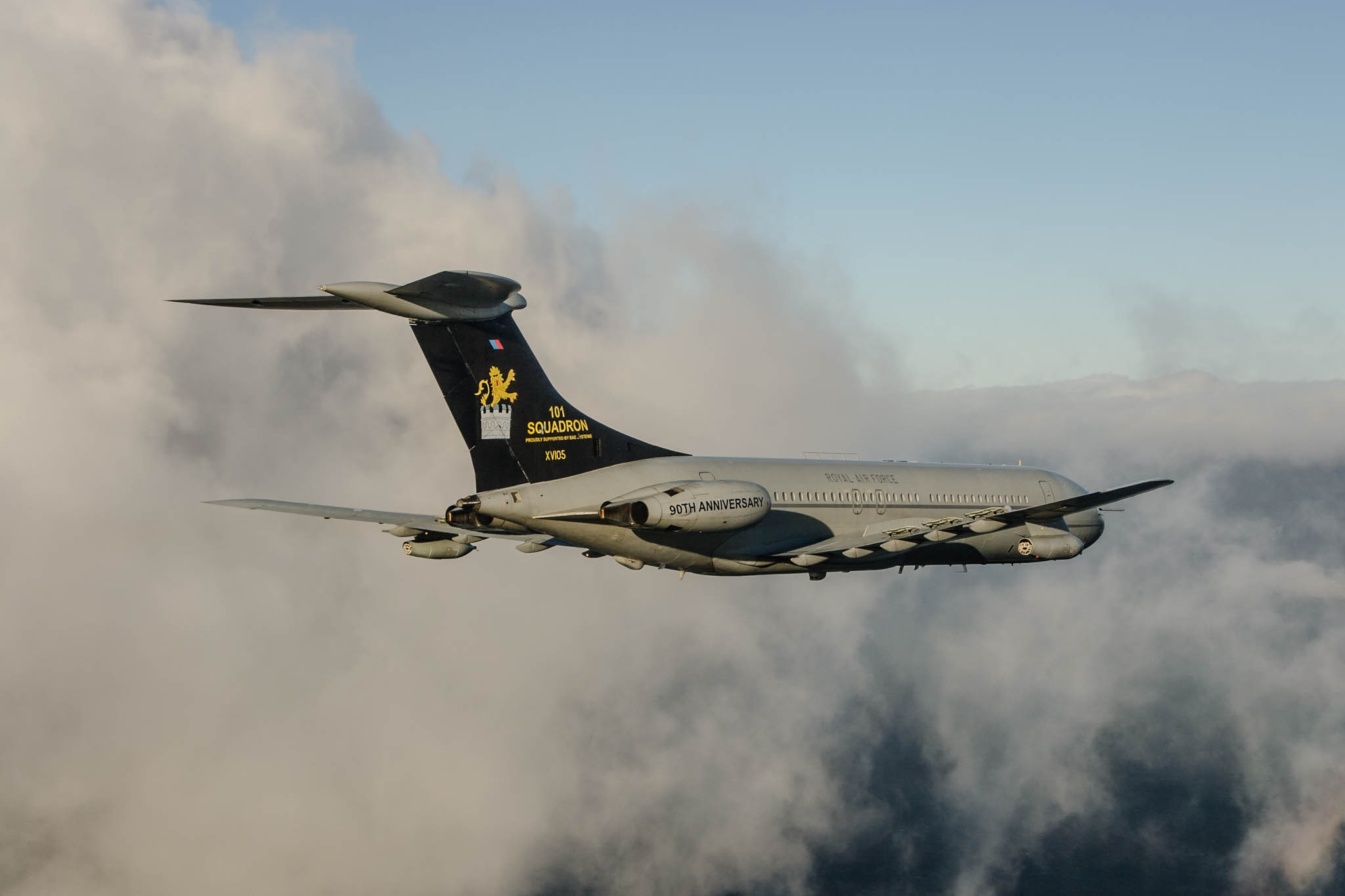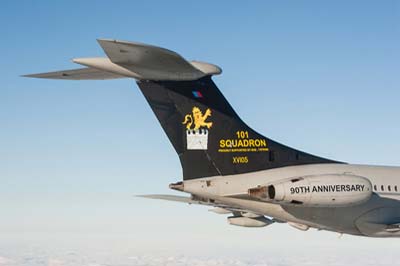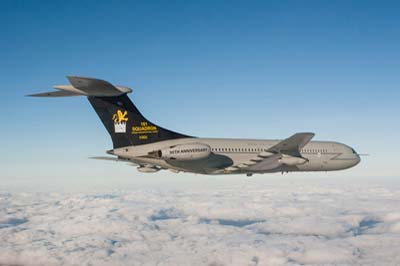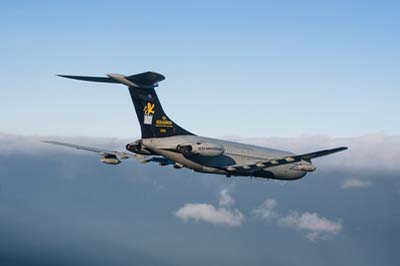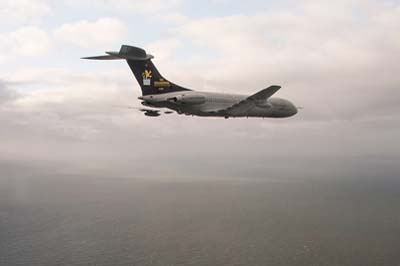Air to Air Photography
101 Squadron's 90th Anniversary
VC-10 C.1K XV105
November 9, 2007
|
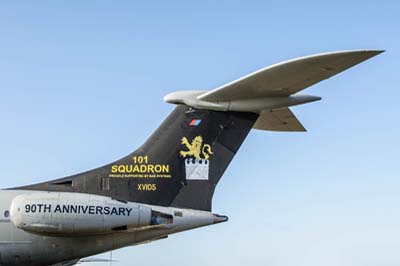
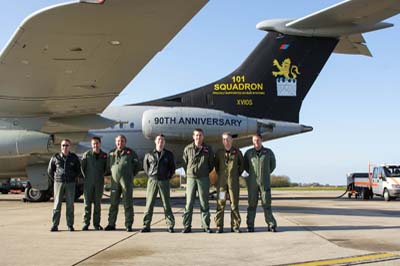 101 Squadron celebrated its 90th birthday on July 12, 2007. To commemorate the event a special 90th anniversary paint scheme, sponsored by BAE Systems, was applied to the tail of its VC-10 C.1K XV105.
101 Squadron celebrated its 90th birthday on July 12, 2007. To commemorate the event a special 90th anniversary paint scheme, sponsored by BAE Systems, was applied to the tail of its VC-10 C.1K XV105.
Formed at South Farnborough in 1917, 101 Squadron immediately saw action flying FE.2s to bomb at night on the western front over Ypres and the Somme. During World War Two they were part of Bomber Command flying the Blenheim, Wellington and finally the Lancaster. Carry on their bombing role at 101 Squadron became the RAFs first jet bomber squadron at Binbrook when it received the Canberra in 1951, replacing the Lincoln. Action was seen at Malaya and Suez before operating the Vulcan at Finningley and later Waddington. Perpetuating involvement in bombing in every major war, the Vulcans of 101 Squadron flew the famous 'Black Buck' missions on the Falkland Islands in 1982. In 1984 the Squadron were given the Air to Air Refuelling (AAR) role with the VC-10, eventually flying missions over Kosovo in both Gulf Wars.
As part of a student aerial refuelling course, aerial receiver training took two VC-10s to Air to Air refuelling Area (AARA) 12. Situated over the Bristol Channel AARA 12 is ideal for AAR training as the is area is relatively long. Consequently as they fly a 'racetrack' pattern the number of 180 degree turns are kept to a minimum.c
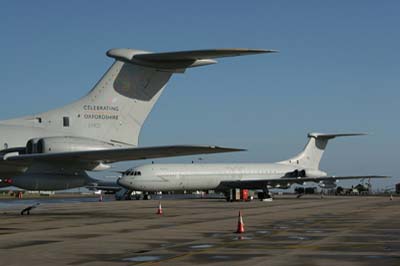 Departing Brize Norton at 11:00 'Kayak 51 Combine' comprised of our aircraft 'Kayak 51' (ZA150 'J') a VC-10 K.3 leading 'Kayak 52' VC-10 C.K1 (XV105) with the instructors and two student VC-10 pilots. After conducting a 'snake climb' we were soon flying our race track pattern. Instructors in 'Kayak 52' for the next three and a half hours continued the training, repeatedly prodding the AAR basket deployed from 'Kayak 51'. Training was conducted at the usual AAR level of around 20,000 feet and at upper level of around 30,000 feet, to demonstrate the differences of aircraft handing at the two levels. Once the training had been concluded there was the opportunity for some air to air photographs of the 101 Squadron 90th Anniversary Special tail. After a spell of flying echelon right with us we swapped over and flew echelon right with them, for a varied sequence of photographs. A plan to descend down to 3,000 feet and an approach to Cardiff was thwarted by low cloud and we had to break off and make our own way back to base.
Departing Brize Norton at 11:00 'Kayak 51 Combine' comprised of our aircraft 'Kayak 51' (ZA150 'J') a VC-10 K.3 leading 'Kayak 52' VC-10 C.K1 (XV105) with the instructors and two student VC-10 pilots. After conducting a 'snake climb' we were soon flying our race track pattern. Instructors in 'Kayak 52' for the next three and a half hours continued the training, repeatedly prodding the AAR basket deployed from 'Kayak 51'. Training was conducted at the usual AAR level of around 20,000 feet and at upper level of around 30,000 feet, to demonstrate the differences of aircraft handing at the two levels. Once the training had been concluded there was the opportunity for some air to air photographs of the 101 Squadron 90th Anniversary Special tail. After a spell of flying echelon right with us we swapped over and flew echelon right with them, for a varied sequence of photographs. A plan to descend down to 3,000 feet and an approach to Cardiff was thwarted by low cloud and we had to break off and make our own way back to base.
Many thanks to the crew for trying to provide as many opportunities for aerial photography as was possible while conducting some essential receiver training. |
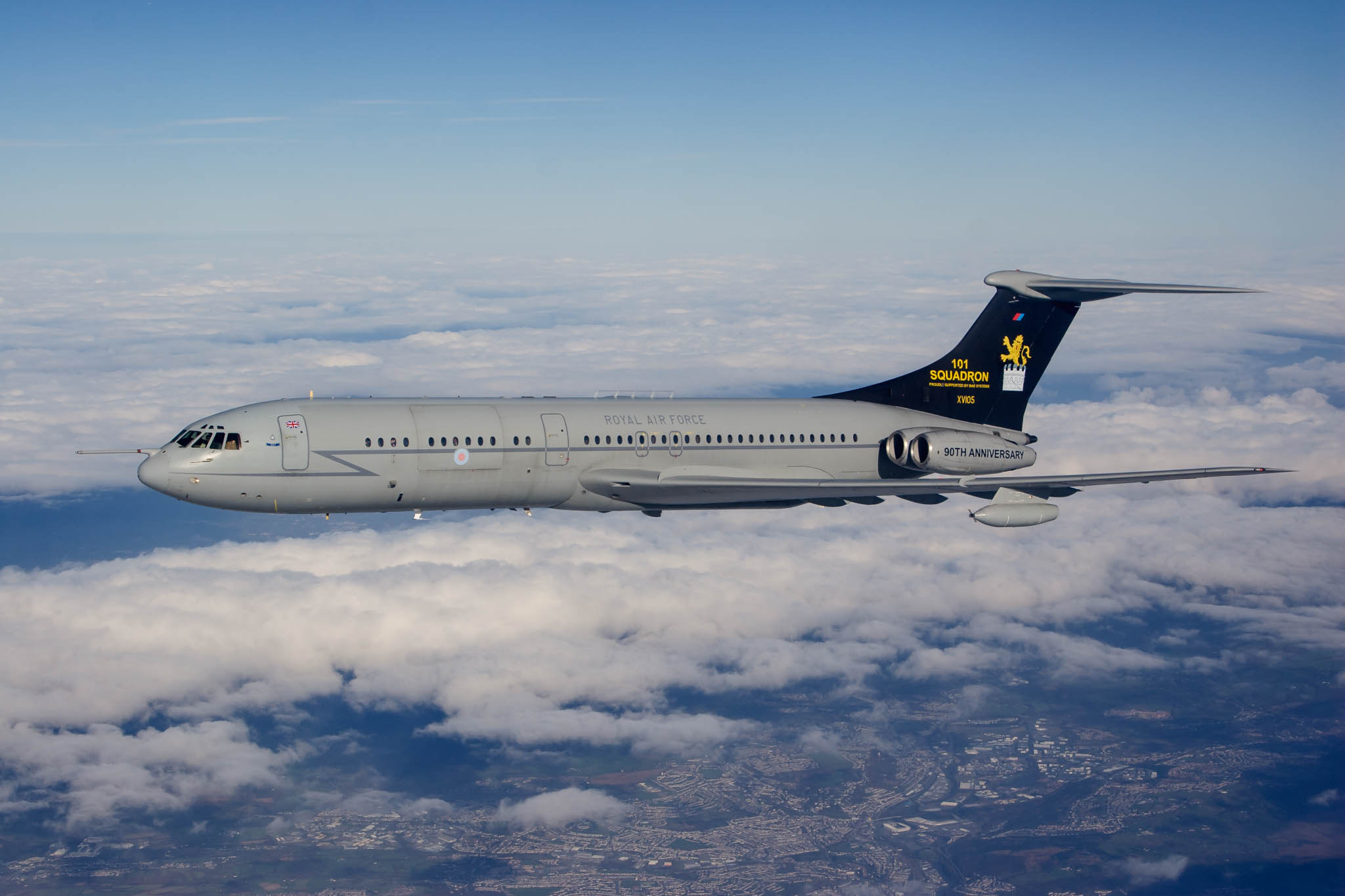 |
| VC-10 C.1K (XV105) with special '101 Squadron 90th Anniversary' markings. |
| Left to right: VC-10 C.1K (XV105) comes up alongside before breaking off to start the AAR receiver training. |
| At the end of the race track, we turn right in formation. |
| Left to right: The combinations of formations and direction provide a range of different lighting effects for the images. |
| Descending down to 3,000 feet we were soon in cloud and forced to break off the formation. |
| Left to right: From 30,000 down to 3,000 feet over the Bristol Channel. |

